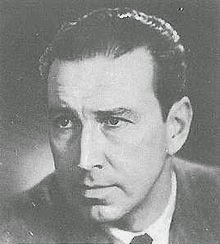Another sf entry for Friday's Forgotten Books at Patti Abbott's blog Pattinase which is being hosted by Todd Mason at Sweet Freedom today.
All Dave Miller wanted to do was commit suicide in peace. He tried, but the things that happened after he'd pulled the trigger were all wrong. Like everyone standing around like statues. No St. Peter, no pearly gate, no pitchforks or halos. He might just as well have saved the bullet!
Dave can’t say “pass” and bring the human statues back to life. Instead, his only hope is fellow survivor John Erickson, an elderly, half-bald, eccentric scientist whose experiment with a time machine has gone horribly wrong, and a friendly police dog called Major.
Like Greylorn by Keith Laumer, which I read and reviewed last week, this story was an easy read although Buckner offers a scientific explanation for the immobilised world as well as the working of the time machine known as impulsor. It all went over my head.
Erickson pursed his lips. We are somewhere partway across the space between present and past. We are living in an instant that can move neither forward nor back. You and I, Dave, and Major—and the Lord knows how many others the world over—have been thrust by my time impulsor onto a timeless beach of eternity. We have been caught in time's backwash. Castaways, you might say.”
All Dave Miller wanted to do was commit suicide in peace. He tried, but the things that happened after he'd pulled the trigger were all wrong. Like everyone standing around like statues. No St. Peter, no pearly gate, no pitchforks or halos. He might just as well have saved the bullet!
 |
Dave Miller pushed with all
his strength, but the girl was an
unmovable as Gibraltar.
|
Imagine a scenario where everyone and everything has come to a standstill, where nothing is moving, where there is no trace of motion or emotion.
Imagine a place where people are in suspended animation, where fires burn without smoke, where doors don’t open, where liquids have turned solid, where pebbles can’t be kicked, where a blade of grass supports your weight.
Imagine a world where all life, animate and inanimate, is frozen like a statue.
Now imagine yourself in just such a place where you are the only living soul and yet you know you are not alone.
It is in this surreal and terrifying world that drugstore owner Dave Miller finds himself after he “commits” suicide to teach his wife, Helen, a lesson.
Imagine a place where people are in suspended animation, where fires burn without smoke, where doors don’t open, where liquids have turned solid, where pebbles can’t be kicked, where a blade of grass supports your weight.
Imagine a world where all life, animate and inanimate, is frozen like a statue.
Now imagine yourself in just such a place where you are the only living soul and yet you know you are not alone.
It is in this surreal and terrifying world that drugstore owner Dave Miller finds himself after he “commits” suicide to teach his wife, Helen, a lesson.
 |
| October 1940 |
This short story by sf writer Bradner Buckner reminded me of a silly game we used to play as kids, where you pointed to a friend and blurted out, “Statue!,” and the friend would freeze where he was until you said “pass” and allowed him to get on with his life. After a while it got on everyone’s nerve.
Dave can’t say “pass” and bring the human statues back to life. Instead, his only hope is fellow survivor John Erickson, an elderly, half-bald, eccentric scientist whose experiment with a time machine has gone horribly wrong, and a friendly police dog called Major.
Like Greylorn by Keith Laumer, which I read and reviewed last week, this story was an easy read although Buckner offers a scientific explanation for the immobilised world as well as the working of the time machine known as impulsor. It all went over my head.
Erickson pursed his lips. We are somewhere partway across the space between present and past. We are living in an instant that can move neither forward nor back. You and I, Dave, and Major—and the Lord knows how many others the world over—have been thrust by my time impulsor onto a timeless beach of eternity. We have been caught in time's backwash. Castaways, you might say.”
 |
| The 1956 issue |
The premise of the story, where time stands still, has been done before, in books, films, and television including, I believe, The Twilight Zone series.
The Day Time Stopped Moving can be described as science fiction, horror, and supernatural rolled into one. It’s a nice little story although I have no idea who Bradner Buckner is. I didn’t find anything on him online. The name could be a pseudonym for a famous sf writer. I leave it to you to enlighten me. The story appeared in Amazing Stories but there is some confusion over the year of publication, 1940 or 1956, so I have reproduced both the covers.
The Day Time Stopped Moving can be described as science fiction, horror, and supernatural rolled into one. It’s a nice little story although I have no idea who Bradner Buckner is. I didn’t find anything on him online. The name could be a pseudonym for a famous sf writer. I leave it to you to enlighten me. The story appeared in Amazing Stories but there is some confusion over the year of publication, 1940 or 1956, so I have reproduced both the covers.
Illustration source: Project Gutenberg

































